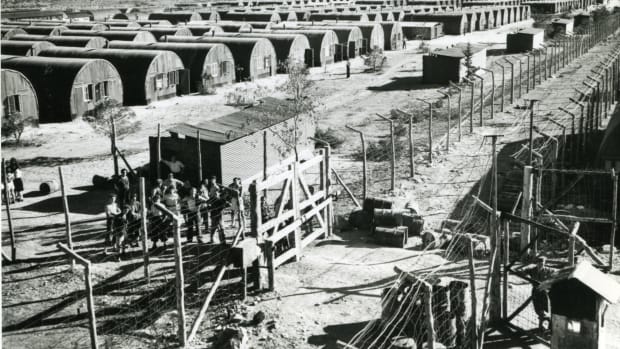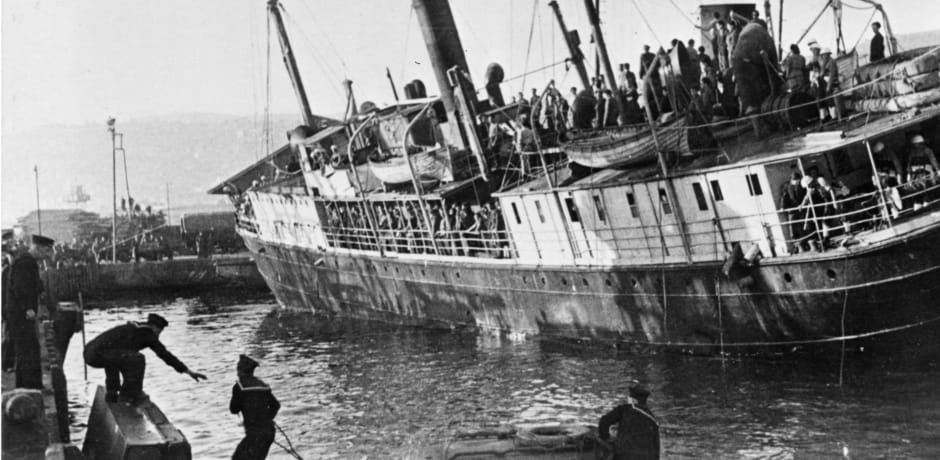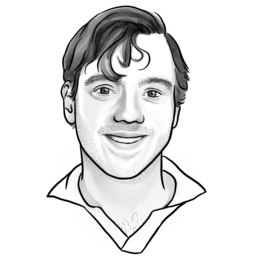
Thousands of Jews ended up in migrant camps in Cyprus after the war: “Hugely cynical”
After World War II, tens of thousands of Jewish emigrants left for British Palestine. Faced with the huge stream of migrants, the British saw only one solution. On what was also British Cyprus, thousands of Jewish migrants once again ended up in camps. Two UvA researchers wrote a book about one of them. “That migration crisis resembles the situation today.”
September 17th, 1947. Jewish Amsterdammer Emile Pimentel sits alone in a camp in Cyprus. While in hiding during the war, he had dreamed of an end to his captivity, a new existence with his group of friends in Israel, and marriage in the Promised Land. Instead, like many Jewish emigrants, Emile was detained by the British in an immigrant camp, had arguments with friends who wanted to return to the Netherlands, and wrote to an old friend who had an affair with his fiancée. “There he sat in front of his tent, reading in solitude every day. He could only compare tragic characters in the camps to characters in his books like Wuthering Heights or Dorian Gray. He completely isolated himself.”
This is how literary scholar Frans Blom and literary writer Vivian Beekman describe the situation of the late Emile Pimentel. Together they wrote the book Het Land achter de zee about Emile Pimentel and the asylum seekers’ camps of Jewish immigrants in Cyprus. More than 53,000 Jews were interned there by the British after the war.
Camps on Cyprus
“I knew nothing about those refugee camps on Cyprus,” says former UvA student Beekman, who wrote her thesis on Emile Pimentel with Blom. “One day I was approached by a Jewish institution that asked me if I was interested in no less than 16 boxes of notebooks belonging to one Emile Pimentel, a Dutchman who emigrated to Israel,” says UvA lecturer Blom about the origins of the book. At the time, Blom was teaching a course on incorporating primary sources into literature and was interested. “Not much later, Eitan Pimentel, Emile's son, and his grandchildren were at the door with piles of notebooks and letters.”
Many of the notebooks and letters describe Emile's long journey from the Netherlands to Palestine. Together with Beekman, Blom decides to do research, write a book, and take a trip to Cyprus and Israel. First, they visit the remains of the internment camps in Cyprus. “We saw barbed wire everywhere,” Blom says, which is now also a sign of the tense border between the Turkish and Greek parts of the island.
With a Cypriot historian, who can only speak to them briefly because the trip is scheduled exactly during Orthodox Easter, the two researchers visit the camps where Jewish migrants were detained for several years. “We stood right on the old camps on the coast, gazed at the land beyond the sea, and could feel what Emile had once dreamed,” Blom continued.

Fortune seekers
In 1946, after the persecution of the Jews and his lonely years in hiding, Emile, like thousands of others, leaves for Palestine. They dream of a new country in the British Mandate area, which the United Kingdom planned to return to the local (mostly Arab) population in 1948, Beekman explains. In accordance with guidelines from the United Nations, which was established after the war, the British government makes a place available for the many Jews who want to leave Europe after the Holocaust.
To limit conflict with the Arab population, a maximum of 1,500 entry visas are issued per month. “Anyone else who tries to enter will be taken to camps in then-British Cyprus. Enormously cynical, of course, that Jewish people, nota bene, are now being locked up in camps again by their liberators,” Blom believes.

Migration crisis
“Of course, that migration crisis resembles the situation today,” Blom says, referring to the migration crisis in Europe. For also in 1946-1949, a coast guard waited for overloaded boats with illegal immigrants (on Emile's ship, there were 2,600 men on a ship with a capacity of 1,500), who are then sent via a French trafficker. In addition, confrontations with the asylum seekers regularly lead to clashes (when Emile is intercepted, several people on board are killed) and boat refugees are detained in overcrowded camps on islands. Blom says, “Fires also regularly broke out in the camps in Cyprus, as recently happened in the Moira camp on the Greek island of Lesbos.”
The conditions were appalling on Cyprus, Beekman stresses. “We read that Emile got little to eat and water was scarce, despite the persistent heat. As a result, tensions regularly flared up. After all, the immigrants came from all over Europe and at most sometimes spoke some Yiddish. Only the group of Dutch friends spoke a little English.”

Israel
“But Emile always wanted to help with the psychological welfare of others. We see that, for example, in how he cared for a young traumatized Hungarian woman in the camp. That psychological care is also very much evident in his grandson Uri, who is now an aid worker, right?” Blom asks Beekman. She agrees. In their “special” follow-up trip to Israel, the land that in 1948 was founded by the Jews present in Palestine, they also meet Emile's family in Tel Aviv.
They then travel to Eilat, now a modern Israeli coastal city on the Red Sea, once the place where Emile and 20 other pioneers and his wife Dodi began a new life after their release from Cyprus. “The former curator of the local museum - a brilliant fellow with one of those big cowboy hats - had known Emile personally and led us to the little hotel Emile had once started,” Blom laughs. In a large parking lot between huge flats, Emile’s mud-brick office still stands. Blom smiles. “Just like in this little house, Emile always held out forlornly in the midst of all the misery.”
Thursday, April 18th, at 8:00 p.m., Vivian Beekman and Frans Blom will present their book The Land Behind the Sea in Spui25. Together with other experts, they will discuss Emile Pimentel and the Jewish migration to Palestine.


